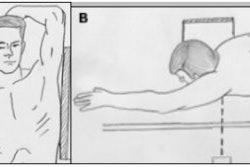In an era of increasing radiologic technologist (RT) personnel shortages, the American Society of Radiologic Technologists (ASRT) won a victory May 14 when the American College of Radiology (ACR) approved a new position. At a meeting held in Washington, DC, a 250-member ACR council voted to endorse proposed roles and responsibilities for a radiologist assistant (RA) position, effectively establishing an advanced-level radiologic technologist role.
Still, RAs will not replace RTs; in fact, only registered RTs will be able to advance to the position of radiology assistant, according to Lynn May, CEO of the ASRT.
"The RA position is not that of a physician’s assistant," May said. "An RA will be an advanced RT, an extender between the RT and the radiologist."
The duties of RAs will include the following:
- Obtain consent for and inject diagnostic imaging agents.
- Perform pre- and post-procedure evaluation of patients undergoing invasive procedures.
- Assist radiologists with invasive procedures.
- Perform fluoroscopy for noninvasive procedures with the supervision of a radiologist.
- Monitor and tailor exams such as IVU, CT urogram, GI studies, VCUG and retrograde urethrograms.
- Provide nasoenteric and oroenteric feeding tube placement in uncomplicated patients.
- Communicate reports of radiologists’ findings to the referring physician.
Although RAs will not interpret results of radiological exams, they will be able to provide preliminary feedback about diagnostic images to radiologists. An RA's salary is expected to be comparable to that of a radiology practitioner assistant (RPA).
Aware that RTs have had few opportunities to continue their clinical work while advancing their careers, the ASRT has been working for more than two years to develop the RA position. Although some RTs have expanded their careers by specializing in a particular imaging modality, many others have had to move out of hands-on clinical work in order to advance to the level of manager or educator.
The RA effort shifted to high gear in March 2002, when ASRT convened an advisory panel in Washington, DC that included representatives from the ACR, the American Registry of Radiologic Technologists (ARRT), and the National Society of Radiology Practitioner Assistants (NSRPA). Their focus was the impending personnel shortage, and how to provide incentives for existing RTs to not only remain in the field, but also improve and streamline patient care.
ASRT expects that RAs will increase productivity by freeing radiologists to focus on the medical requirements of interpretation, and improve workflow efficiency by permitting more patients to be examined or treated. The society also hopes the RA position will streamline patient management, improving patient care overall, and leading to higher retention rates in the profession.
"With this new career level, RTs will be able to advance in their careers while remaining in diagnostic radiography," said Eileen Maloney, president of ASRT. "Advanced-level radiographers have been working in the United Kingdom for nearly 30 years. Adding the radiologist assistant to the career ladder for American radiologic technologists may facilitate upward mobility among current technologists, leading to increased employee satisfaction and tenure."
Thirteen colleges or universities are now interested in establishing RA programs; in February, the ASRT’s Education and Research Foundation granted $25,000 each to Loma Linda University in Loma Linda, CA, Midwestern State University in Wichita Falls, TX, University of Medicine and Dentistry of New Jersey in Newark, and the University of North Carolina at Chapel Hill to launch RA programs.
Although educational criteria for the position are still being developed, it’s certain that an RA program will be a four-year academic baccalaureate followed by a clinical preceptorship under the supervision of a radiologist. ASRT is considering the establishment of a standardized national exam for RA certification. Loma Linda University expects to enroll students in an RA program in fall of 2003; ASRT hopes that the other institutions will begin accepting applications by 2004.
The opportunity to advance to the RA position will give RTs’ careers a boost, offering increased accountability and responsibility, according to May. And in light of the additional work that needs to be done to establish the position, the support of groups like ACR, as well as individual radiologists, is crucial.
"We’re going to need support as we propose changes to RT licensure laws, develop a national exam and a certification process, and adjust reimbursement rules to include RA procedures," May said.
By Kate Madden YeeAuntMinnie.com contributing writer
May 30, 2003
Related Reading
Survey reveals pay and perks for radiologic technologists, May 29, 2003
PICCing sides: Interventional radiologists weigh IV access lines, February 24, 2003
ASRT fund issues grants for RA programs, February 3, 2003
Radiology extenders -- the answer to the RT personnel shortage?, September 9, 2002
ASRT offers creative solutions to stem RT shortage, July 30, 2002
RPAs may offer solution to strapped radiology practices, October 25, 2001
Copyright © 2003 AuntMinnie.com



















